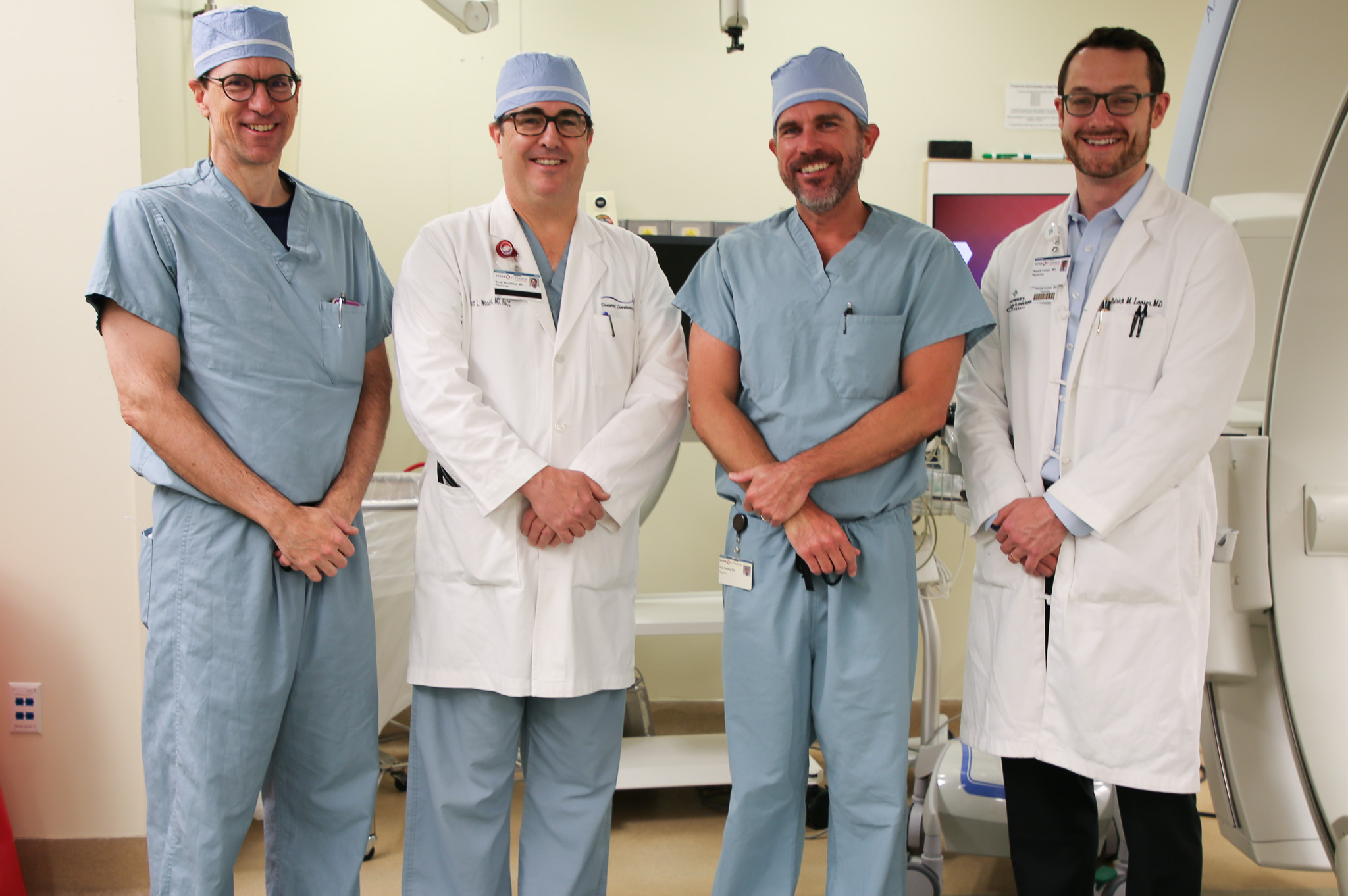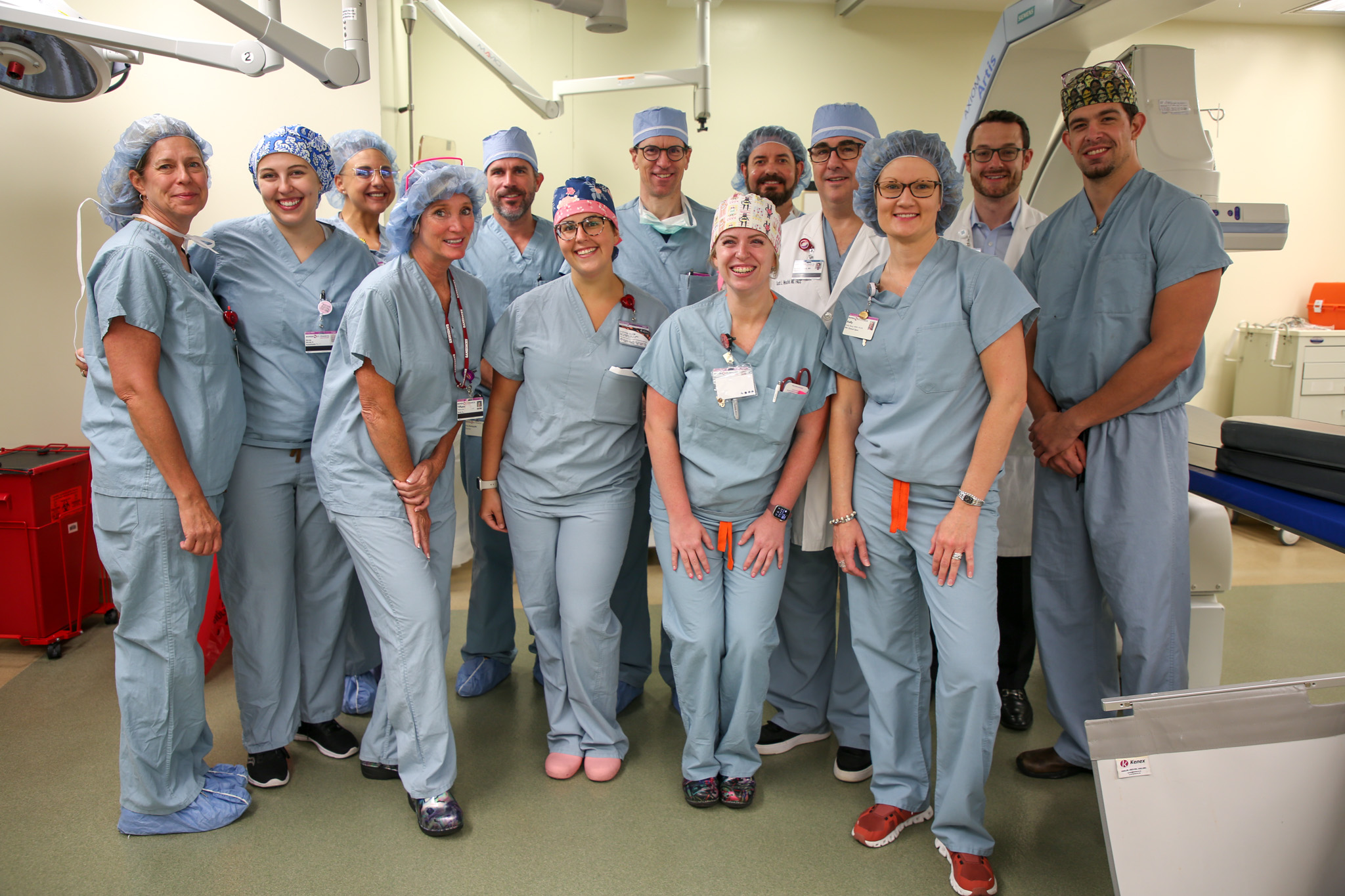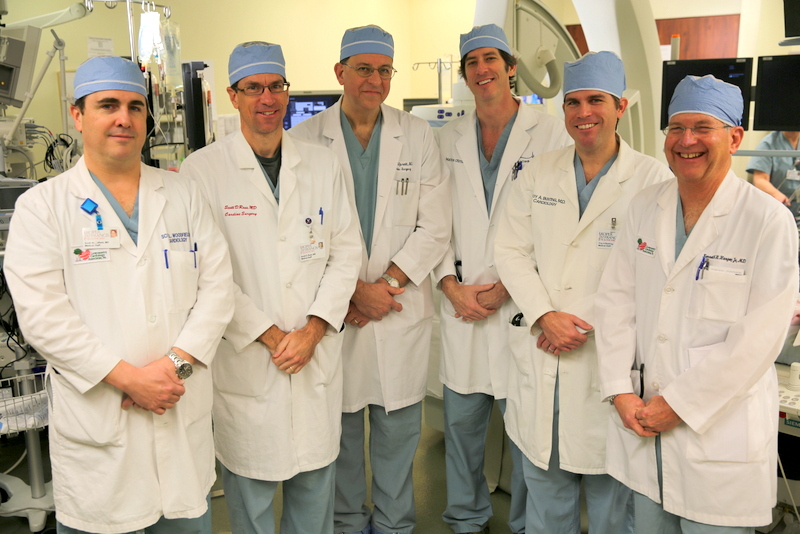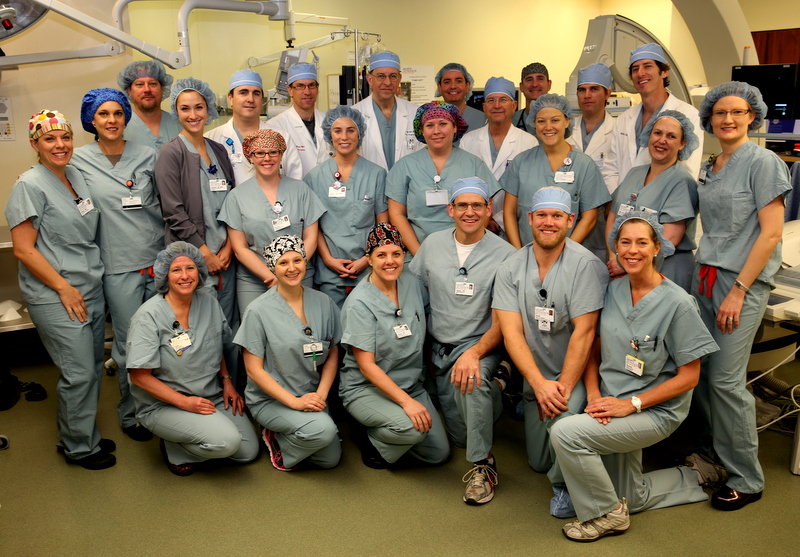Thursday, June 1, 2023
-
Roper St. Francis Healthcare's valve team is committed to minimally invasive valve care

Roper St. Francis Healthcare’s valve program is as successful as its team is tight knit.
Cardiovascular Surgeon Dr. Scott Ross, Cardiologist Dr. Troy Bunting, Cardiologist Dr. Scott Woodfield and Valve Referral Coordinator Kelly Stacy facilitated and performed the first transcatheter aortic valve replacements (TAVRs) at Roper Hospital in 2014.
After spending the better part of a decade together, the team, which now includes Cardiologist Dr. Patrick Looser who joined in 2018, recently notched a major milestone – 700 procedures.
“To think that the same people in this room today were the ones championing TAVR in the very beginning makes it even more special,” said Dr. Ross. “The team has been consistent since day one.”
Transformative cardiology
TAVR is an advanced, minimally invasive heart procedure offered at Roper Hospital that helps patients live longer, healthier lives. This enables patients to avoid open-heart procedures, which can be too risky for some, and instead uses arteries to move replacement valves to their hearts.
As time passes, the aortic valve tends to calcify and constrict, so a replacement valve is needed to make that passageway larger. TAVR is designed to open the aortic valve, through which blood is pumped to the rest of the body.
“The introduction of TAVRs was one of the biggest advancements to come out of cardiology since stents in the cath lab,” Kelly said. “And they were one of the most transformative developments that Roper Hospital has been a part of in the last couple decades.”
In the beginning
The first TAVR patients at Roper Hospital in 2014 were very frail, Kelly said.
“They were so sick,” Kelly said. “It has meant so much to be able to help these patients. To see them at their worst and then see them working their way back to their best is truly remarkable.”
The team spent eight months preparing those cases. They flew to New York, where they presented their cases to a team of experts to confirm whether the patients would be good candidates for the procedure. Kelly remembers those cases well; she even can recall the exact dates of their procedures. They did their first three cases on Dec. 10 and two more the day after, she said.
“The reason this program has been successful is because our team is so close,” said Dr. Ross. “It’s a super group comprised of talented individuals who are all very caring and very skilled. We’ve been through it all together, and our patients have really benefited from that.”
The evolution of TAVR
With almost nine years of TAVR experience, a healthier patient population and advancements that allow for an even more minimally invasive approach, Roper St. Francis Healthcare’s valve team has streamlined its process.
When Roper St. Francis Healthcare’s valve program did its first TAVR cases, the procedures required nearly two dozen hospital staff in the operating room. At the time, three cases could take up to 11 hours. Now, they can book up to four cases and be out of surgery in a normal business day.
TAVR patients now are healthier because they have access to treatments such as TAVR at an earlier stage, before they get as sick as those first five cases. As the patient population has gotten healthier, the staff requirement in OR has been reduced, Kelly said.
“Following these patients longitudinally, seeing their quality of life improve, their lack of symptoms and a reduction in their hospitalizations has been one of the most satisfying things I’ve done here,” said Dr. Bunting.
The valve team also noted changes that improved the procedure itself.
Before, TAVR patients needed general anesthesia. Now, they just get heavy sedation drugs, which allows them to wake up faster with less grogginess and leads to a quicker recovery. Additionally, the catheters that are inserted through the patients’ legs are much smaller and allow for easier access to the femoral artery.
In 2016, surgeons at Roper Hospital moved to a hybrid operating room , which gave them double the amount of room and full imaging capabilities in the OR.
“The transformation from a big production when we first started to such an everyday occurrence is remarkable,” said Dr. Woodfield. “Today, TAVR is a major part of our practice. We’ve helped so many patients because of our team and how well we work together.”
A testament of devotion
While notching 700 TAVR procedures speaks volumes about the team’s dedication to minimally invasive valve care, it is just one procedure in the valve team’s arsenal of approaches.
“This isn’t just a TAVR program,” said Dr. Ross. “This is a valve program. We’re not just a hammer and one nail. We can adapt to any situation, and we work diligently to determine the best route for every individual.”
The valve team at Roper St. Francis is comprised of a skilled, interdisciplinary senior team of experts who treat all types of valvular heart disease.
The program’s physicians include cardiologists, cardiac imagers, structural interventional cardiologists and heart surgeons. They offer a depth of experience, expertise and training, including the latest in evidence-based practice. The team meets weekly to review each patient’s case to discuss the best steps for their care.
In addition to boasting a successful TAVR program, ’s mitral program has also received recent attention for its success. Roper St. Francis Healthcare by volume and by outcome lies in the top 2 percent in the country , according to recent data presented by the Journal of the American College of Cardiology.
“We take care of a lot of adult hearts,” Kelly said. “We’re doing great work with great outcomes. Our doctors are stellar and they’re performing state-of-the-art procedures.”
Drs. Bunting, Looser, Ross and Woodfield along with Kelly toss jokes around and tease, but in reflecting on how far the program has come with TAVR, they refer to one another with pride and respect.
The team approach and their trust in one another is what makes them so successful, Dr. Bunting said.
“It’s a great service to the Charleston community that we’re able to provide so many patients with high-quality care,” said Dr. Bunting. “And I think it’s a testament to Roper St. Francis Healthcare that they’re invested in this program. Their faith in us is why we’ve been able to help so many patients.”

RSFH's TAVR team in 2023.

TAVR physicians in 2014.

RSFH's TAVR team in 2014.